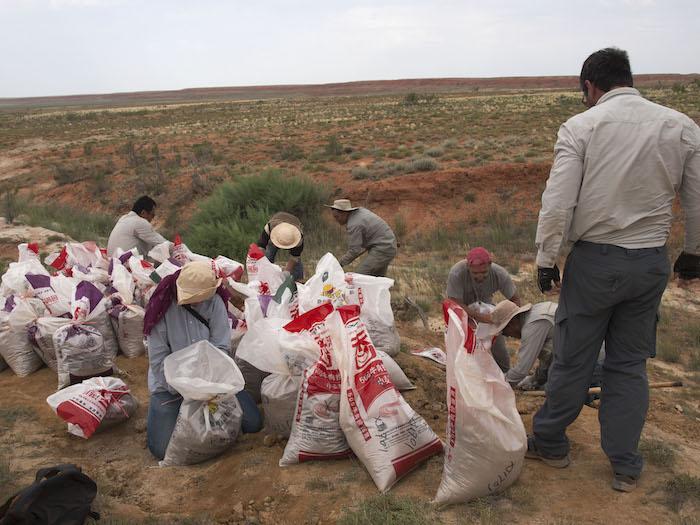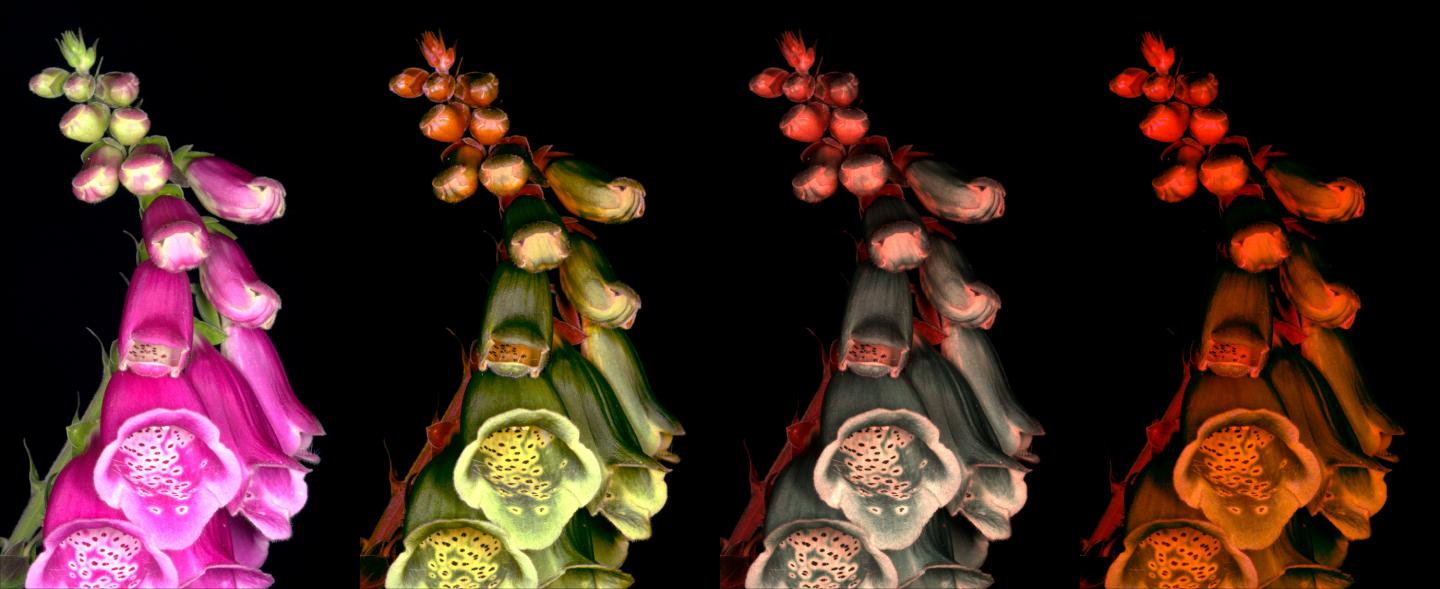North Carolina State University researchers have developed a new technique that can alter plant metabolism. Tested in tobacco plants, the technique showed that it could reduce harmful chemical compounds, including some that are carcinogenic. The findings could be used to…
Tag: ECOLOGY/ENVIRONMENT
Sweet success: CABBI demonstrates first precision breeding of sugarcane with CRISPR-Cas9
Gene-editing offers a targeted, efficient way to develop new varieties of this productive but complex plant
Electric delivery vehicles: When, where, how they’re charged has big impact on greenhouse gas emissi
The transportation sector is the largest contributor to greenhouse gas emissions in the United States, and a lot of attention has been devoted to electric passenger vehicles and their potential to help reduce those emissions. But with the rise of…
Ecosystem destruction endangers local soy agriculture in Brazil
New research: Agriculture-driven ecosystem destruction turns up local temperatures, eats up billions in soy revenue in Brazil
Urban areas with high levels of air pollution may increase risk of childhood obesity
A study of more than 2,000 children in Sabadell (Barcelona, Spain) associates these three environmental factors with higher body mass index
HKU ecologists develop a novel forensic tool for detecting laundering of critically endangered cockatoos
Ecologists from the Conservation Forensics Laboratory of the Research Division for Ecology and Biodiversity at the University of Hong Kong (HKU) have applied stable isotope techniques to determine whether birds in the pet trade are captive or wild-caught, a key…
Researchers: Let crop residues rot in the field — it’s a climate win
Plant material that lies to rot in soil isn’t just valuable as compost. In fact, agricultural crop residue plays a crucial role in sequestering carbon, which is vital for reducing global CO2 emissions.
When a single tree makes a difference
Individual trees in urban areas provide cooling during evening, research shows
Coastal ecosystems worldwide: Billion-dollar carbon reservoirs
Climate and ecosystem change lead to a global redistribution of wealth
Emotions and culture are most important for acceptance of carnivore management strategies
Emotions towards and cultural importance of large carnivores are better predictors of the acceptance of management strategies by local communities than the extent of livestock depredation. This is the result of a new interdisciplinary investigation led by scientists from the…
Symbionts sans frontieres: Bacterial partners travel the world
Some bacterial symbionts in travel the globe and are true cosmopolitans
Red Dead Redemption 2 teaches players about wildlife
Players of the popular game Red Dead Redemption 2 learn how to identify real American wildlife, new research shows. The game, set in the American West in 1899, features simulations of about 200 real species of animals. The new study,…
NIST uses method to understand the molecular underpinnings of a disease affecting corals
Coral reefs are a favorite spot for scuba divers and are among the world’s most diverse ecosystems. For example, the Hawaiian coral reefs, known as the “rainforests of the sea,” host over 7,000 species of marine animals, fishes, birds and…
Scientists explore seamounts in Phoenix Islands Archipelago, gain insights into deep water diversity
Marine scientists aboard Schmidt Ocean Institute’s research vessel Falkor have identified likely new marine species and deep sea organisms on nine seamounts that were explored for the first time in the remote Phoenix Islands Archipelago. In a 34-day expedition that…
Elevated warming, ozone have detrimental effects on plant roots, promote soil carbon loss
Two factors that play a key role in climate change – increased climate warming and elevated ozone levels – appear to have detrimental effects on soybean plant roots, their relationship with symbiotic microorganisms in the soil and the ways the…
Mapping biodiversity in South Africa’s Greater Cape Floristic Region
The region includes two Global Biodiversity Hotspots; the project will document the distribution and function of species and ecosystems
Researchers propose a scheme that treats carbon emissions like financial debt
Paying off our carbon debt
How fishing communities are responding to climate change
Wellesley professor examines how fishers are adapting to climate-related changes in species distribution and location
Study: How a large cat deity helps people to share space with leopards in India
The story of the Warli and the Waghoba
Climate changed the size of our bodies and, to some extent, our brains
The average body size of humans has fluctuated significantly over the last million years and is strongly linked to temperature. Colder, harsher climates drove the evolution of larger body sizes, while warmer climates led to smaller bodies. Brain size also…
Can whale poo help save the planet?
Whales were hunted nearly to extinction. A new report shows how important they are for healthy oceans. They can even help mitigate climate change.
To predict underwater volcano eruptions, scientist looks at images from space
A new study monitored satellite images to obtain sea discoloration data as a novel indicator in detecting if an underwater volcano’s eruption is imminent.
Creating a lab mangrove helps to identify new bacteria
A pioneering cultivation strategy that recreates a mangrove environment in the lab has enabled identification of novel bacteria residing in Red Sea mangroves and will help improve understanding of mangrove ecosystem stability, resilience and sustainability. Mangroves are highly productive, dominant…
A UOC team develops a neural network to identify tiger mosquitoes
UOC researchers develop a method that can be contribute to investigate and control disease-transmitting tiger mosquitoes
Zoo amphibians were on display while humans were locked away
While the UK was in lockdown, certain species of captive amphibians became more visible, a new study suggests. The COVID-19 pandemic forced the closure of zoos across the UK for several months from March 2020, with gradual re-openings from summer…
Skeletal muscle thermogenesis keeps chilly sea otters warm
Internal warmth through skeletal muscle thermogenesis enables sea otters – the smallest of marine mammals – to survive in their cold, marine habitats, researchers report. The study provides insight into how the tiny creatures maintain a normal mammalian body temperature…
When resistance is futile, new paper advises RAD range of conservation options
Major ecosystem changes like sea-level rise, desertification and lake warming are fueling uncertainty about the future. Many initiatives – such as those fighting to fully eradicate non-native species, or to combat wildfires – focus on actively resisting change to preserve…
Ecologists compare accuracy of lidar technologies for monitoring forest vegetation
Findings suggest mobile platforms have great potential for monitoring a variety of forest attributes
Many nonprofits, companies report using commercial species in tree planting projects
Nonprofits and companies planting trees in the tropics may often pick species for their commercial rather than ecological value, researchers found in a new analysis of organizations’ publicly available data. They also found many may not have tracked the trees’…
Coastal wetlands are nature’s flood defences
They offer more protection than we thought, estuaries study shows
Longest known continuous record of the Paleozoic discovered in Yukon wilderness
Discovery illuminates a 120-million-year record of ancient Earth

Researchers detail the most ancient bat fossil ever discovered in Asia
A new paper appearing in Biology Letters describes the oldest-known fragmentary bat fossils from Asia, pushing back the evolutionary record for bats on that continent to the dawn of the Eocene and boosting the possibility that the bat family’s “mysterious” origins someday might be traced to Asia.
Mapping Dengue Hot Spots Pinpoints Risk for Zika and Chikungunya
Data from nine cities in Mexico confirms that identifying dengue fever “hot spots” can provide a predictive map for future outbreaks of Zika and chikungunya. All three of these viral diseases are spread by the Aedes aegypti mosquito.
Researchers detail the most ancient bat fossil ever discovered in Asia
LAWRENCE — A new paper appearing in Biology Letters describes the oldest-known fragmentary bat fossils from Asia, pushing back the evolutionary record for bats on that continent to the dawn of the Eocene and boosting the possibility that the bat…
Human-driven habitat change leads to physical, behavioral change in mosquitofish
Bahamian mosquitofish in habitats fragmented by human activity are more willing to explore their environment, more stressed by change and have smaller brain regions associated with fear response than mosquitofish from unaffected habitats. The new study from North Carolina State…
How plants compensate symbiotic microbes
“Equal pay for equal work,” a motto touted by many people, turns out to be relevant to the plant world as well. According to new research by Stanford University ecologists, plants allocate resources to their microbial partners in proportion to…
Atmospheric acidity impacts oceanic ecology
Increased acidity in the atmosphere is disrupting the ecological balance of the oceans, according to new research led by the University of East Anglia (UEA). The first study to look at acidity’s impact on nutrient transport to the ocean demonstrates…
New method lets researchers rapidly monitor snow leopard stress levels in the wild
The newly developed method lets researchers rapidly and accurately measure stress hormones in snow leopards without the need for bulky equipment or specialised knowledge. It uses widely available equipment that can be carried into the field, allowing hormone extraction from…
Why wild African fruits can supplement low protein staple foods
In the line-up of wild African fruits, the marula is the best known. For thousands of years, people have depended on the trees for food, medicines, and more. It is also exported globally as the rockstar ingredient of a cream…
The reproductive advantages of large male fish
Bielefeld University researchers publish systematic review and meta-analysis on mosquitofish
A universal approach to tailoring soft robots
An integrated design optimisation and fabrication workflow opens new opportunities for tailoring the mechanical properties of soft machines.
Greater investment and innovation in educating children about environmental issues needed to help future generations respond to the climate emergency, experts urge
Environmental education provision needs greater investment and innovation if future generations are to be able to respond fully to the climate emergency, experts have said. The deepening environmental crisis will continue to worsen if there is not significant support and…

Light pollution has complex effects on animal vision
Changes in the colour and intensity of light pollution over the past few decades result in complex and unpredictable effects on animal vision, new research shows.
The evolution of vinegar flies is based on the variation of male sex pheromones
Max Planck researchers decipher the chemical language underlying mating in 99 species of the genus Drosophila
Loss of biodiversity in streams threatens vital biological process
UNIVERSITY PARK, Pa. — The fast-moving decline and extinction of many species of detritivores — organisms that break down and remove dead plant and animal matter — may have dire consequences, an international team of scientists suggests in a new…
Scientists warn on the harmful implications of losing Indigenous and local knowledge systems
The study has been published in the Journal of Ethnobiology
From eyebrow beans to ‘lost’ rice: community seedbanks are protecting China’s crops
Despite being relatively new in China, community-led seedbanks are a valuable resource in conserving agricultural biodiversity. For the first time, researchers have provided a comprehensive summary of the services performed by 27 seedbanks across the coun
Freshwater methamphetamine pollution turns brown trout into addicts
Human pollution is often evident from oil slicks and plastic drifting on shore, but many of the drugs that we consume also end up washing out into our water and current effluent treatment isn’t equipped to deal with them. Drugs…
Methane in the plumes of Saturn’s moon Enceladus: Possible signs of life?
A study published in Nature Astronomy concludes that known geochemical processes can’t explain the levels of methane measured by the Cassini spacecraft on Saturn’s icy moon
University of Guam: Less than 10% of transplanted cycads survive long-term in foreign soil
Long-term monitoring needed to accurately measure transplantation success